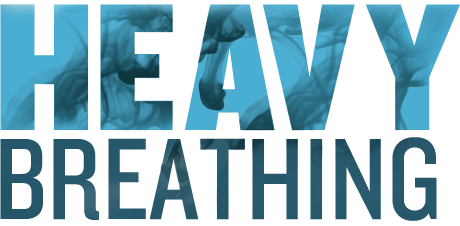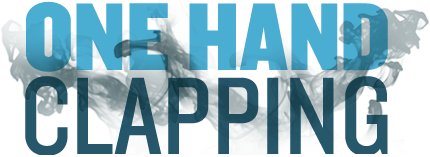
“Hold your finger up until you feel it,” he said, holding up his own as demonstration. I stood across from Kane Mantyla, owner of Float Matrix, with my right index finger pointed upwards, waiting for a cue to my next move. Did I feel my finger? What the hell did that mean? I feared we’d be standing there all day, so I said, “I think I feel it?” Kane chuckled, responding, “Exactly. You think you feel your finger.”
I had come to Float Matrix, a Nob Hill floatation center, to find total relaxation, and perhaps something more within the dark, salty confines of one of its isolation tanks. I was looking for a place to turn the volume of my life down a few notches, if not all the way to zero. I was intrigued by Float Matrix’s claim to be the “center for finding your center.”

A floatation pod is a light and soundproof tank filled with 10 inches of water that’s saturated with 800 lbs of Epsom salt and heated to a lukewarm 93.5 degrees Fahrenheit. As with the Dead Sea, the salt ensures that your body will float. The gist is that without anything better to do but lay naked in a pitch black receptacle of water, your mind and body will let go of the tensions within.
I was on board with the idea, but I had tried floatation once before and wasn’t sold on it. It turns out, that’s to be expected — a person’s first float is often disappointing. Like a virgin — too excited, too expectant, and a little scared — I was unable to completely relax.
But this time was going to be different. Knowing that experience was half the battle, I’d combat the other half through preparation, and I knew the perfect person to help me.

I met up with James Nestor at his Bernal Heights home two days before my first of two floats. His book “Get High Now,” an exploration of ways to reach altered states of perception and consciousness without drugs or alcohol, had just hit the stands and he was in the midst of book release madness. James had also just completed research for his next project, a book about the science of (alleged) out-of-body experiences. Using what he learned from workshops on breathwork, sensory deprivation, and other holistic methods, he’s planning an attempt to have an OBE within a sensory deprivation tank. James was jazzed about the overlap in our projects and said he had just the thing for me.
“This guy is going to sound really weird at the beginning,” James warned before he cued up the tape. The recording was of a nasally Indian guru repeating commands to breathe in and out at varying speeds. For the next 12 minutes we sat across from each other and breathed deeply in unison. We had to kick James’ dog out of the room because her staring made me realize how ridiculous we looked. Even though we had just been listening to The Smiths on his iPod, I wasn’t sure I believed him when he said that “it’s not just people who listen to Enya” that do this sorta thing.
I struggled to keep up with the guru. My nostrils ached from the cold air rushing in and out of them, my head and chest felt heavy. By the end of the session, my arms were stiff and tingly. While I wasn’t exactly in max chill mode, I definitely felt high on something. I left James’ house confident that I was on the path to ultimate relaxation. My plan was to do this breathwork right before getting into the tank.

I arrived at the Float Matrix 15 minutes before my appointment, with enough time to do the prepared breathing. I found myself in a room facing a serene man behind a desk, surrounded by wooden spa furniture and a trickling fountain. New Age music played quietly in the background — a gong-heavy number that set a calm, but uncanny David Lynchian feel to the moment
Kane shook my hand, but it seemed the formality was for my sake. A former surfer from Hawaii turned certified natural chef in the Bay Area, Kane admitted he was tired from a night out — a Jason Mraz show — but he seemed eerily relaxed and rested to me. “Serenity now” flashed through my mind.
I explained James’ breathwork plan to Kane and he recommended not to do it. Breathing in that sort of manner, he said, could “bring up” too much. A neophyte may not want to go there — it might be too intense. Instead, he suggested breathing in, holding for 3, 4, and 5 second intervals, before exhaling, followed by gentle breaths into the “diantien” (that’s Eastern medicine talk for the stomach). Since Kane is the Float Master, I went with his advice, even though it meant flushing my plan down the tubes.
After showing me the shower where I’d remove excess dirt and oils from my body, Kane led me to my tank. My vessel — one of two in the facility — was a white, incinerator-like 4 by 8 foot compartment made by Samadhi, the manufacturer that created floatation tanks for the movement’s founding father, John C. Lilly, a man who believed that people in their most relaxed state could communicate with dolphins. As Kane opened the pod, a faint odor escaped that reminded me of my childhood frog aquarium. (Later, he assured me that the tanks were sterilized after every float, and that no living thing — except sea monkeys, maybe — could live in the salty environs.) A blue light glowed within; I was to turn it off once I was comfortably situated inside. When my time was over, Kane would turn it on from the outside and tap on the tank.

Inside the tank, I was more nervous than I thought I’d be. My heart was beating so fervently that I could actually feel and hear it reverberating in the water. My head sunk deeper than the rest of my body, and although it felt weird, I was able to ease back so that all but my eyes, nose, and mouth were submerged.
I concentrated on my breathing and attempted to clear my mind. I congratulated myself when I wasn’t thinking about anything, until I realized I was thinking about something, afterall. Eventually, I was able to reach a half-assed state of relaxation. I involuntarily twitched a few times, like you do when you’re about to fall asleep. Occasionally, I heard knocking and felt gurgling inside my stomach. Although I was never entirely at ease, I was surprised when I heard the click of the light and a gentle rap on the tank. My hour was over.
To be honest, I didn’t really know how I felt post-float. I felt slowed down and calmer, but it wasn’t life changing. Maybe I should’ve gotten high on breathing before my float.
As for the mysterious knocking, Kane says it’s the most common noise floaters hear. “This is going to sound crazy, but what you’re hearing is the knocking of your own muscles releasing.”
A week later, I entered the tank for my last session. I had let go of notions of reaching blissed-out nirvana. I wasn’t going to see crazy visuals, taste the rainbow, or talk to God. My hope was that I’d finally let go and know how that felt.

I had forgotten that I had cut myself a few times while cooking that week, but my fingers burned and throbbed to remind me. I gave up trying to do any of the breathwork that James or Kane had taught me, instead just breathing normally. When I stopped feeling my cuts, I realized that I had been deep in thought. As I tried to recall what I had been thinking, I’d wake up, as if from a dream. I fell in and out of this state a few times. More so than in my last session, the twitches happened — jolting me awake from my half-slumber. Kane said that this was another sign of relaxation — electricity stored in tense muscle was finding release. And again, I felt movement in my digestive tract (shit, literally, working itself out) and heard several rounds of knocking.
Some people claim to work out problems, write the Great American novel, or solve complicated equations while floating. Taking advantage of my lucid-dream-like state of being, I tried to conjure issues I normally would avoid, but it was useless. As soon as I pinpointed a problem, my mind was already slipping into another direction, like a pat of butter melting down a mound of pancakes. My state of nirvana had hung up its Do Not Disturb sign and would not answer the knocking of maid service. A warm glow surrounded me; I finally felt that finger. Kane was right, you could only feel it when you stopped thinking about trying to feel it.







